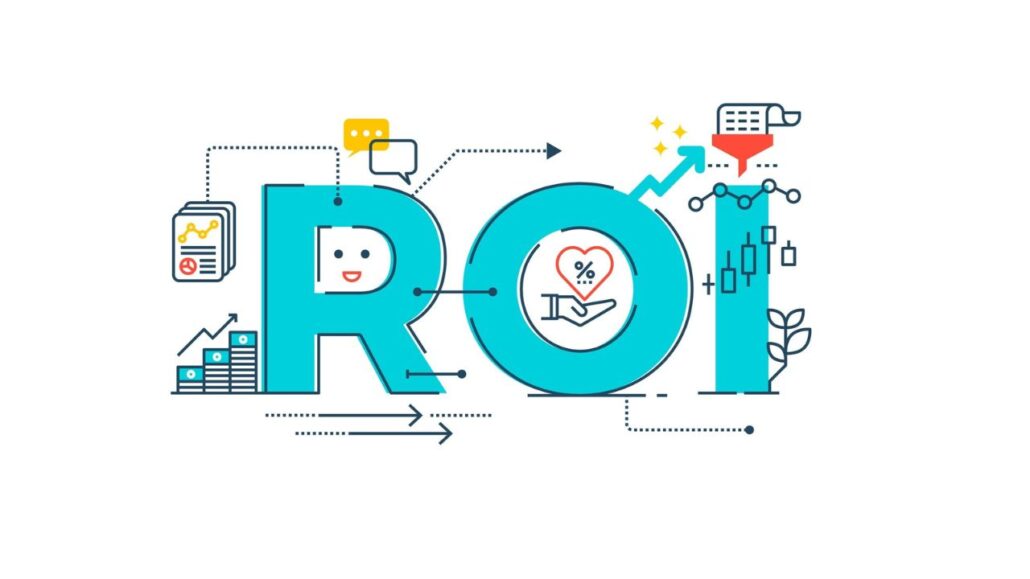Investing is both an art and a science, requiring a keen understanding of markets, risk assessment, and financial analysis. Among the many metrics used to evaluate investments, Return on Investment (ROI) is a critical measure of efficiency and profitability.
The definition of ROI will be discussed in this article. Why it is essential for investors, and how it can be calculated and interpreted.
Finance and Investing
All investments are made in anticipation of capital appreciation or the expectation that the original investment’s (or principal’s) worth would increase relative to its initial value.
It happens, it doesn’t happen, and it even falls occasionally! Learn how to evaluate the quality of an investment by reading on.
The cost of preparing an annual sales report
The cost of preparing an annual sales report can vary significantly depending on various factors, including the size and complexity of the business, the amount of data to be analyzed, and the tools and resources used for report creation.
Let’s break down some of the key cost factors associated with preparing an annual sales report:
Personnel Costs
Salaries and Wages: The time and effort of employees involved in collecting, analyzing, and presenting sales data contribute to the cost. This includes the compensation of sales analysts, data entry personnel, and managers overseeing the report preparation.
Benefits and Overhead: Besides salaries, consider benefits such as healthcare, retirement contributions, and other overhead costs associated with employees.
Software and Technology
Reporting Software: Many businesses use specialized reporting software or customer relationship management (CRM) tools to compile and analyze sales data. Such software’s licensing, subscription fees, or maintenance costs can be significant.
Data Integration Tools: The cost of data integration tools or services should be considered if data needs to be extracted from various sources and integrated.
Analysis and Data Collection
Data Collection Tools: Depending on the complexity of data sources, you may need data collection tools or systems. This could include point-of-sale systems, e-commerce platforms, or other data capture tools.
Data Analysis Tools: Cost considerations include data analysis tools, statistical software, and visualization platforms that help interpret and present sales data.
Consulting and Professional Services:
External Consultants: Some businesses hire external consultants or firms with data analysis and report preparation expertise. Their fees will add to the cost.
Printing and Distribution
Printing: If physical copies of the report are required for distribution, costs associated with printing, binding, and materials should be considered.
Distribution: Costs for mailing, shipping, or electronically distributing the report to stakeholders or regulatory bodies are also relevant.
Training and Development:
Employee Training: Ensuring employees are proficient in data collection and analysis tools may require training programs, which come with associated costs.
Compliance and Regulatory Costs
Regulatory Reporting: Depending on the industry and location, there may be regulatory requirements for the content and format of annual sales reports. Ensuring compliance may involve additional costs.
Quality Assurance and Review:
Quality Control: Performing quality assurance checks and reviews to ensure the accuracy and completeness of the report may necessitate additional resources.
Miscellaneous Costs
Travel Expenses: If data collection involves site visits or travel, expenses related to transportation, accommodation, and meals should be considered.
ROI

ROI is a measure of financial performance that assesses the efficiency and profitability of an investment, the difference between the net gain or loss from the investment to the initial cost of the investment.
It is expressed as a percentage, providing investors with a clear picture of how well their investment has performed.
The formula for calculating ROI is as follows:
ROI (%) = [(Net Profit / Investment Cost) x 100]
In this equation:
- Net Profit is the income the investment generates minus all associated expenses.
- Investment Cost represents the total amount of money invested, including the initial capital and additional costs like fees, maintenance, and taxes.
ROI is a fundamental metric in the world of finance and investment for several reasons:
Performance Evaluation: ROI helps investors assess how efficiently their capital is utilized. It directly measures whether an investment is generating profits or incurring losses.
Comparison Tool
Investors can use ROI to compare the performance of different investments, enabling them to allocate their resources wisely through educated decision-making.
Risk Assessment: ROI aids in risk assessment by revealing the potential rewards relative to the risks associated with an investment. High ROI investments often come with higher risks, and vice versa.
Strategic Decision-Making: Understanding ROI assists in strategic decision-making, allowing investors to prioritize investments that align with their financial goals.
Goal Setting: ROI can be used to set realistic financial goals. By knowing the expected ROI of an investment, Investors can make an educated guess as to how long it will take them to reach their financial goals.
Calculating ROI in Practice
Let’s walk through an example to illustrate how to calculate ROI:
Suppose you invest $50,000 in a real estate property. Over a year, the property generates a rental income of $10,000, and after accounting for all expenses (such as property taxes, maintenance, and management fees), you have a net profit of $7,000.
ROI = [(7,000 / 50,000) x 100] = 14%
In this scenario, your ROI is 14%, indicating that your investment in the real estate property yielded a 14% return over one year.
How to Calculate ROI
Calculating ROI involves a straightforward formula, but the process may vary depending on the investment type and the complexity of the associated costs and returns. Here is a step-by-step guide on how to calculate ROI:
Identify the Investment
Clearly define the investment you want to evaluate. It could be a business project, a real estate property, a stock investment, or any other asset or endeavor.
Determine Net Profit
Calculate the net Profit generated by the investment. This includes returns, gains, or income generated minus all associated costs and expenses. Be sure to account for both initial and ongoing costs.
Calculate the Cost of Investment
Determine the total cost of the investment. This includes the initial purchase price, transaction fees, ongoing maintenance costs, and any other expenses related to the investment.
Apply the ROI Formula
Use the ROI formula to calculate the return on investment:
ROI = (Net Profit / Cost of Investment) x 100
Interpret the Result
Express the ROI as a percentage. A positive ROI indicates profitability, while a negative ROI suggests a loss. The higher the ROI, the more efficient the investment is considered.
Interpreting ROI
Interpreting ROI correctly is crucial for making informed investment decisions. The resulting percentage can convey different meanings based on the context and the specific investment. Here are some key points to consider when interpreting ROI:
Positive ROI
A positive ROI signifies that the investment has generated a profit. The higher the positive ROI, the more profitable the investment is. For example, an ROI of 10% indicates a 10% return on the initial investment.
Negative ROI
A negative ROI indicates a loss on the investment. In this case, the investment must generate more returns to cover costs. It’s essential to evaluate why the ROI is negative and whether adjustments or divestment are necessary.
Comparing ROI
To make meaningful comparisons between different investments, consider their ROIs side by side. An investment with a higher ROI is generally more efficient than one with a lower ROI, assuming similar risk levels.
ROI Over Time
Tracking ROI over time helps assess the long-term performance of an investment. A declining ROI may indicate diminishing returns or increased costs, warranting further analysis.
ROI vs. Benchmark
Compare the calculated ROI to your established benchmarks and financial goals. It may be a successful investment if the ROI meets or exceeds your expectations.
Maximizing ROI: Strategies for Success
To maximize ROI and achieve your investment goals, consider implementing the following strategies:
Diversification
Spread your investments across different asset classes to reduce risk. Diversification can help balance the overall ROI of your portfolio.
Research and Due Diligence
Thoroughly analyze potential investments to understand the risks and benefits involved.
Conduct due diligence to assess the investment’s viability.
Cost Management
Minimize investment costs by comparing fees, expenses, and taxes. Lowering costs can boost your net Profit and ROI.
Investment Horizon
Align your investment horizon with your financial goals. Longer investment horizons allow for more significant ROI potential.
Professional Guidance
Consult with financial advisors or investment professionals to make informed decisions and receive expert guidance.
Continuous Monitoring
Regularly monitor your investments’ performance and adjust your portfolio as needed. Staying informed is crucial for maintaining or increasing ROI.
Risk Management
Understand your risk tolerance and use risk management techniques like stop-loss orders or diversification to protect your investments.
Conclusion:
Return on Investment (ROI) is an indispensable metric for investors seeking to make informed financial decisions. It not only measures the efficiency and profitability of an investment but also assists in risk assessment, performance evaluation, and goal setting.
By consistently evaluating ROI and integrating it into their investment strategy, investors can make more confident choices and work towards achieving their financial aspirations while managing risks effectively.
Remember that while ROI is a valuable tool, it should be used with other financial metrics and a well-considered investment strategy for the most comprehensive analysis.
FAQ
What is the measure of efficiency in an investment?
The measure of efficiency in an investment is often quantified using a financial metric called “Return on Investment” or ROI. ROI calculates the return or gain from an investment relative to its cost, expressed as a percentage.
Why is ROI considered an important measure of investment efficiency?
ROI is crucial because it provides a standardized way to assess the profitability and effectiveness of an investment. Making educated selections aids businesses and investors. by quantifying the returns of the capital invested.
How is ROI calculated?
ROI is calculated using the formula:
ROI = (Net Profit / Cost of Investment) x 100. Net Profit includes all returns, gains, or income from the investment minus any associated costs or expenses. Cost of Investment is the total amount of money invested.
What does a positive ROI indicate?
A high ROI shows that the investment was profitable. The higher the positive ROI, the more efficient the investment is considered. For example, an ROI of 15% means a 15% return on the initial investment.
What does a negative ROI signify?
A negative ROI indicates a loss on the investment. The investment needs to generate more returns to cover its costs. A negative ROI suggests that the investment could be more efficient in generating profits.
Can ROI be used to compare different types of investments?
Yes, ROI can be used to compare different types of investments. By calculating and comparing the ROI for various, Investors can choose where to put their money by using information about available investment possibilities.
Are there any limitations to using ROI to measure investment efficiency?
Yes, there are limitations to using ROI. For instance, ROI does not consider the timing of returns, risk tolerance, or external factors that may impact investments. Using ROI in conjunction with other financial metrics and considerations is important.
How can I maximize the ROI of my investments?
To maximize ROI, consider diversifying your investments, conducting thorough research, managing costs, aligning your investment horizon with your goals, seeking professional guidance, and regularly monitoring your investments.
Is a high ROI always better than a low ROI?
Not necessarily. While a higher ROI is generally preferred, it’s essential to consider the associated risks. High ROI investments often come with higher risks. Your investment strategy should align with your risk tolerance and financial goals.
Can ROI be used to evaluate both short-term and long-term investments?
Yes, ROI can be used for both short-term and long-term investments. However, the time horizon may impact the interpretation of ROI. Short-term investments may have higher volatility, while long-term investments offer more stable, compounded returns.
Also read – >>> How to Improve Your Digital Marketing ROI



